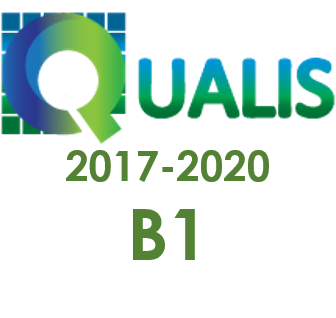Evolution of Ways of Knowing in the Teaching of Electromagnetic Induction
A Proposal Based on the IDAS Methodology
Keywords:
Electromagnetic induction. Secondary education. IDAS methodology. Active learning. Design-based research.Abstract
This research addresses the difficulties in teaching and learning electromagnetic induction at the secondary level, a key issue for scientific-technological literacy. From a design-based approach, a teaching proposal based on the IDAS (Initiation, Development, Application and Synthesis) methodology was developed and implemented. The intervention included practical activities, scientific modeling and reflection, aimed at promoting a progressive understanding of the phenomenon. The results showed that, after teaching, the students evolved from intuitive and reductionist explanations towards models consistent with scientific principles, managing to apply concepts such as magnetic flux and Faraday's law in real problems. This work not only contributes to overcoming the difficulties identified, but also reinforces the role of active methodologies and the teacher as a facilitator in learning. The findings support the effectiveness of the proposal in teaching EI and offer significant contributions for secondary education in similar contexts.
Downloads
References
ALMUDÍ, J., ZUZA, K. y GUISASOLA, J. Aprendizaje de la teoría de inducción electromagnética en cursos universitarios de física general. Una enseñanza por resolución guiada de problemas. Enseñanza de las Ciencias, 34(2), 7-24, 2016. Recuperado, a partir de https://raco.cat/index.php/Ensenanza/article/view/309277
BRAVO, B., PESA, M. y BRAUNMULLER, M. IDAS: una metodología de enseñanza centrada en el estudiante para favorecer el aprendizaje de la física. Revista brasileira de Ensino de Física, 44, 2022.
BRAVO B. La enseñanza y el aprendizaje de la visión y el color en educación secundaria. Universidad Autónoma de Madrid. España, 2008. Sitio consultado en noviembre de 2024. Disponible en: https://repositorio.uam.es/bitstream/handle/10486/1973/5029_bravo_bettina.pdf?sequence=1&isAllowed=y
CHI, M. T., ROSCOE, R. D., SLOTTA, J. D., ROY, M., & CHASE, C. C. Misconceived causal explanations for emergent processes. Cognitive science, 36(1), 1-61, 2012.
CROSETTI, B., & IBÁÑEZ, J. M. S. La investigación basada en diseño en Tecnología Educativa. Revista Interuniversitaria de Investigación en Tecnología Educativa, 2016.
HOGARTH, R. Educar la Intuición. Ediciones Paidós Ibérica, S.A. Barcelona y Editorial Paidós, SAICF, Buenos Aires, 2002.
INORRETA, Y., BRAVO, B., & BRAVO, S. La enseñanza y aprendizaje de inducción electromagnética en educación secundaria obligatoria. Tesis Doctoral no publicada. Departamento de Formación Docente. Núcleo de Investigación en Educación en Ciencia y Tecnología (NIECyT). Facultad de Ciencias Exactas. Universidad Nacional del Centro de la Provincia de Buenos Aires, 2024.
INORRETA, Y., BRAVO, B., & BRAVO, S. La enseñanza y el aprendizaje del fenómeno de inducción electromagnética en el nivel secundario. Revista De Enseñanza De La Física, 33, 357–365, 2021. Recuperado a partir de https://revistas.unc.edu.ar/index.php/revistaEF/article/view/35585
NAIZAQUE APONTE, N. Diseño de una estrategia didáctica para la enseñanza de la inducción electromagnética. Tesis de Maestría en Enseñanza de las Ciencias Exactas y Naturales. Facultad de Ciencias, Universidad Nacional de Colombia. Bogotá, Colombia. 2013. http://bdigital.unal.edu.co/39628/1/1186696.2013.pdf . Consultado en noviembre de 2024.
POZO, J. Aprender en tiempos revueltos. Madrid: Alianza Editorial. España, 2016.
POZO, J.I. Humana mente. El mundo, la conciencia y la carne. Madrid: Ed. Morata. pp 105 – 240, 2001.
POZO J.I. y GÓMEZ CREZPO, M. Aprender y enseñar ciencias. Del conocimiento cotidiano al conocimiento científico. Cap IV. Ed. Morata SL, 1998.
PESA, M. A., & de CUDMANI, L. C. ¿Qué ideas tienen los estudiantes respecto a la visión? Revista Educación y pedagogía, (21), 15-33, 1998.
RIUNAIDO, M. C., & DONOLO, D. Estudios de diseño. Una perspectiva prometedora en la investigación educativa. Revista de Educación a Distancia (RED), (22, 2010).
SALINAS DE SANDOVAL, J. y SANDOVAL, J. Explicación de colores resultantes: modos de razonamiento subyacente; Explicación de colores resultantes: modos de razonar subyacentes. Revista Española de Física, 10, 1996.
ZUZA, K., ALMUDÍ, J. M., y GUISASOLA, J. Revisión de la investigación acerca de las ideas de los estudiantes sobre la interpretación de los fenómenos de Inducción electromagnética. Revista Enseñanza de las Ciencias, 30(2), 175-19, 2012.
Downloads
Published
How to Cite
Issue
Section
License
Copyright (c) 2024 Revista Internacional de Pesquisa em Didática das Ciências e Matemática

This work is licensed under a Creative Commons Attribution-NonCommercial-ShareAlike 4.0 International License.




